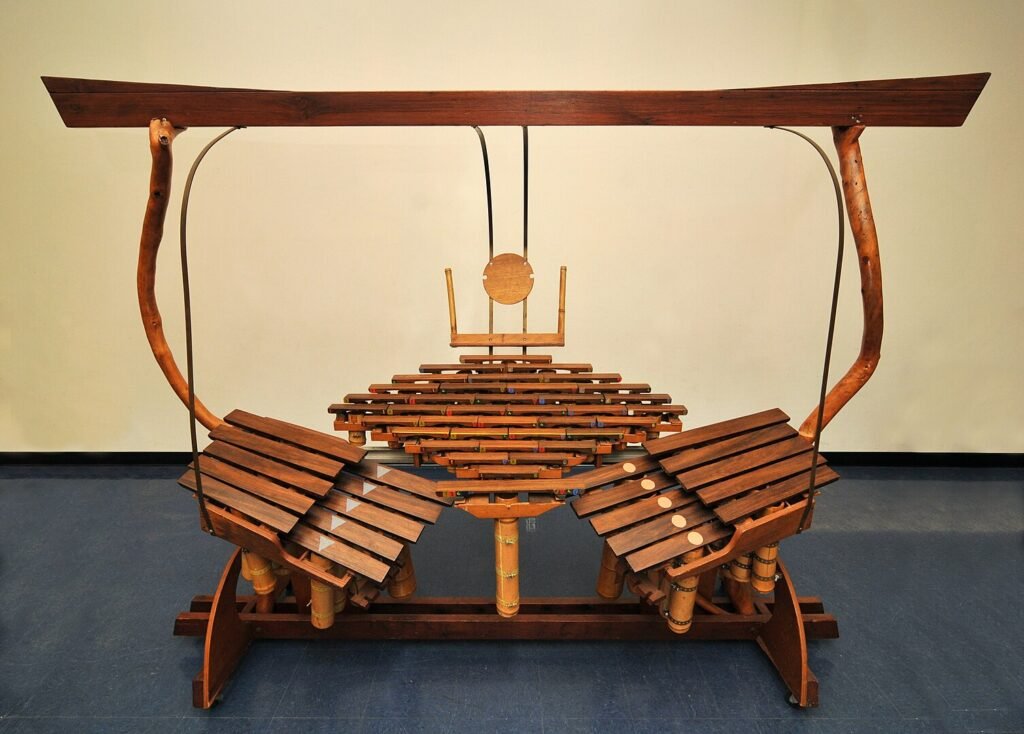Who Was Harry Partch?

Harry Partch, born in 1901 in Oakland, California, was raised in a musically eclectic environment. His early exposure to the sounds of Mandarin conversations and traditional music in China, where he spent part of his childhood, likely shaped his auditory palette.
While Partch received some traditional schooling in music, he was largely self-taught, which might explain his later rebellion against the Western musical tradition of equal temperament tuning.
Compositional Style: Breaking the Mold
Harry Partch was a pioneer of microtonal music, exploring scales of unequal intervals within an octave. Disenchanted with the constraints of traditional Western music, Partch invented his own scale of 43 tones per octave.
Partch’s music is an immersive, almost theatrical experience that integrates visual arts, dance, and spoken word. His goal was to return to a more primal, emotionally engaging form of music. He believed music shouldn’t just be heard; it should be seen and felt, involving the whole body and soul.
Three Compositions
Partch composed a significant number of pieces, most of which included theatrical elements.
- “Delusion of the Fury“ – A ritualistic drama inspired by Japanese Noh theatre and Ethiopian folk music. This piece is a perfect example of Partch’s integrative style, using custom instruments and performers who act as much as they play.
- “Barstow“ – Based on inscriptions found on a highway railing in Barstow, California, this piece for spoken voice and instruments captures the essence of American life, blending spoken word with unique instrumental textures.
- “The Bewitched“ – A dance satire that critiques and comments on various societal norms. This longer work showcases Partch’s use of corporeal music, where musicians become part of the action.
Five of Partch’s Unique Instruments
Harry Partch is equally known for his unique instruments. Some were traditional instruments modified to his specifications, others were wholly new inventions.

By HorsePunchKid – Own work, CC BY-SA 3.0

By HorsePunchKid – Own work, CC BY-SA 3.0

By HorsePunchKid – Own work, CC BY-SA 3.0.
YouTube Resources to Dive Deeper
- “What is the Tonality Diamond? (Harry Partch’s Theories, Explained)“ – Excellent and quick description of Harry Partch’s microtonal scales.
- “The Harry Partch Instrumentarium“ – Charles Corey, curator of the instruments, which were housed at the University of Washington in Seattle, gives a tour of the instruments and the unique sounds they make and iconoclastic musical notations which Partch invented for the performers to be able to play his compositions.
- “Harry Partch: Music Studio“ – A documentary about Partch’s hand-built microtonal instruments. Film by Madeline Tourtelot in 1958.
Listen for These in His Compositions
- “Delusion of the Fury: A Ritual of Dream and Delusion“ – A film by Madeline Tourtelot, recorded at UCLA Playhouse 1969.
- “Barstow“ – Focus on how the spoken words interact with the microtonal scales of the instruments. It’s a fascinating dialogue between melody and narrative.
- “Harry Partch introducing The Bewitched, WTTW-Chicago“ – Harry describes the piece, instruments and how to experience it.
Where to Learn More?
The Harry Partch Foundation offers extensive resources about Partch, including recordings and analyses of his work. Partch’s books, like “Genesis of a Music“, provide insights into his theories and inventions.
